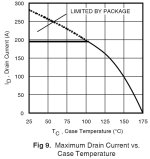Peters wrote:
Wow SjwNz, I never tried anything 300A, but your last waveform looks very nice, almost clean. What I see is that the 13MHz matches the expectation with 3xCoss, because the frequency dropped from 23MHz by the factor of 1/sqrt(3), provided the layout inductance is almost the same.
One more thing you could try with the same board if you want, because there is much space between your MOSFET rows, to remove the 5 capacitors and solder them between the MOSFETs. Normally it should reduce the main inductance, so increase the 13MHz and further reduce the ringing amplitude, but can't tell for sure. Depends on how much part of the inductance is the layout L and how much is the series L of the capacitors. It is the theory, but only the test could prove or not prove.



